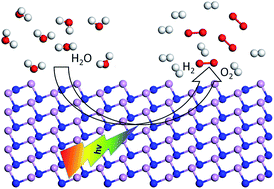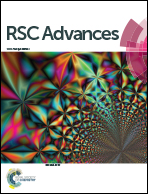A novel metal-free two-dimensional material for photocatalytic water splitting – phosphorus nitride (γ-PN)†
Abstract
Visible-light-driven water-splitting technology has attracted wide attention because of its sustainable and renewable production of hydrogen. The key to photocatalysis field is to search materials with suitable oxidizing and reducing potential. Herein we investigated the novel 2D γ-phosphorus nitride (γ-PN) monolayer as a candidate photocatalyst for reducing water into hydrogen and oxygen from the first-principles and molecular dynamics calculations. Our results show that the 2D γ-PN monolayer is an indirect semiconductor whose conduction and valence band edges matches well with the chemical potential of H+/H2 and O2/H2O. Strain effect is considered to tune the electronic properties of γ-PN. The calculation results reveal that tensile strain decreases the band gap and upshifts the work function of the γ-PN monolayer. The γ-PN monolayer at the 10% tensile strain shows the optimal performance in catalysing the water-splitting due to the low band gap and the better absorption spectrum at the UV-visible light range. Furthermore, the molecular dynamics shows that the γ-PN in the aqueous solution always keep stable after 100 ps simulation. Both the density functional theory (DFT) and molecular dynamics (MD) simulation reflect that the γ-PN monolayer is reliable and promising as a water-splitting photocatalyst.



 Please wait while we load your content...
Please wait while we load your content...